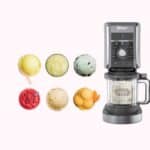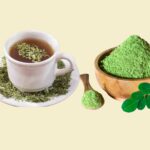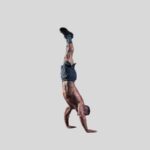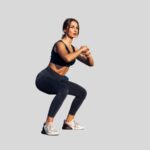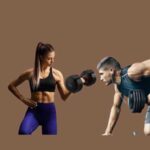Want to learn how to get big arms if your skinny, you’ve come to the right place. In this blog, we’ll discuss key principles and techniques to help you get big arms and develop the physique you desire.
Table of Contents
How To Get Big Arms If Your Skinny
Why Do Some People Have Super Skinny Arms?
There are numerous reasons that some people might have arms that appear noticeably thin or absence of muscle definition. These aspects can contribute to a condition called “super skinny arms.” It’s essential to bear in mind that everyone’s body is unique, and numerous factors can influence arm size and muscle development.
Genetics:
One aspect is genetics, which plays a substantial role in figuring out body composition. Some individuals naturally have a lean body type identified by a quicker metabolic process and a propensity to store less fat. Subsequently, they may discover building substantial muscle mass in their arms is tougher. While genetics can influence body shape and size, it’s important to keep in mind that targeted exercise and correct nutrition can still improve arm muscle advancement, no matter one’s hereditary predisposition.
Lack of Muscle Development:
The arms have a number of muscle groups, consisting of the biceps, triceps muscles, and forearm muscles. Strength training workouts focusing on the arms, such as bicep curls, tricep dips, and push-ups, can assist in stimulating muscle development and boost arm size and definition.
Inadequate Caloric Intake:
Inadequate calorie consumption is another aspect to think about. Preserving a consistent calorie deficit, where a private takes in fewer calories than their body requires, can cause total weight loss, including muscle mass.
When the body doesn’t get sufficient calories, it might utilize muscle tissue as an energy source, leading to muscle breakdown and minimized arm muscle size. It’s essential to take in a well-balanced diet plan that supplies sufficient calories and a sufficient quantity of protein to promote muscle growth.
Limited Physical Activity:
Engaging in weightlifting, resistance training, or bodyweight workouts that target the arm muscles can increase muscle size and strength. Substance exercises like rows, pull-ups, and overhead presses can also help engage numerous muscle groups in the arms, leading to better overall development.
Hormonal Imbalance:
Hormone imbalances can impact muscle development. An imbalance in hormone levels, such as low testosterone, can impact muscle development and make it more challenging to develop substantial muscle mass in the arms.
Medical Conditions:
Particular medical conditions can add to total weight reduction and result in slim arms. Conditions such as hyperthyroidism, where the thyroid gland produces excessive hormonal agents, can increase metabolic processes and result in weight loss, consisting of muscle mass.
Similarly, conditions like celiac illness, which impacts nutrient absorption in the intestinal tracts, can result in inadequate nutrient uptake and muscle wasting. If someone presumes a hidden medical condition, looking for medical recommendations and going through suitable diagnostic tests is important.
Numerous aspects, including genes, muscle advancement, calorie intake, exercise, hormonal balance, and medical conditions, can add to having extremely skinny arms. While some of these aspects may be beyond a person’s control, targeted strength training exercises, proper nutrition, and an active way of life can help improve arm muscle development and general body composition.
Related: Unveiling The Reasons Behind Small Tricep Big Bicep
Arm Muscle Anatomy
The arm comprises several major muscle groups: the biceps brachii, triceps brachii, brachialis, and brachioradialis. These muscles interact to facilitate different motions of the lower arm and upper arm.
Biceps Brachii: The biceps brachii is a two-headed muscle on the front of the upper arm. It consists of a long head and a brief head. The biceps brachii is mostly accountable for elbow flexion, which involves flexing the elbow joint and bringing the hand more detailed to the shoulder. It also helps in lower arm supination, where the palm deals upward.
Triceps Brachii: The triceps brachii is a three-headed muscle on the back of the upper arm. It includes a long head, a lateral head, and a median head. The tricep muscle brachii is the primary muscle accountable for elbow extension, which includes correcting the alignment of the arm at the elbow joint. When the arm is raised backward, it also assists in shoulder extension.
Brachialis: The brachialis is a muscle located below the biceps brachii. It runs along the front of the arm, originating from the lower half of the humerus bone and connecting to the ulna bone in the lower arm. The brachialis is the primary muscle accountable for elbow flexion and plays a considerable role in total arm strength.
Brachioradialis: The brachioradialis is a muscle that runs along the lower arm, starting at the arm and connecting to the radius bone. It lies on the lateral side of the lower arm and adds to both elbow flexion and lower arm pronation (rotation of the forearm so the palm deals with down).
When designing a reliable exercise program that targets specific areas for muscle growth and strength advancement, understanding the anatomy of these arm muscles is important. By integrating exercises that engage these muscles, you can effectively promote their development and improve overall arm strength and meaning.
Biceps Brachii: The biceps brachii is a two-headed muscle on the upper arm’s front. Triceps Brachii: The triceps brachii is a three-headed muscle on the back of the upper arm. The tricep brachii is the primary muscle responsible for elbow extension, which includes straightening the arm at the elbow joint.
Related: 7 Reasons: Why Aren’t My Arms Growing
The Average Arm Size
Arm size can vary greatly among individuals due to genetics, muscle development, body composition, and overall fitness level. However, I can offer general guidelines regarding average arm size based on measurements and common expectations.
When measuring arm size, the typical reference point is the circumference of the upper arm. This measurement is taken at the midpoint between the shoulder and elbow, with the arm relaxed and unflexed.
For Men:
• The average arm size for adult men is around 13 to 16 inches or 33 to 41 centimeters in circumference.
• Arm sizes below 13 inches (33 cm) are generally considered smaller, while sizes above 16 inches (41 cm) are considered larger or well-developed.
For women:
• The average arm size for adult women is typically around 10 to 13 inches or 25 to 33 centimeters in circumference.
• Arm sizes below 10 inches (25 cm) are generally considered smaller, while sizes above 13 inches (33 cm) may be larger or well-toned.
Remember that these measurements are average estimates and can vary depending on height, body weight, and muscle distribution. Personal goals and preferences may differ, as some individuals may aim for larger or more defined arms through specific training and muscle-building programs.
If you have specific goals regarding your arm size or overall physique, consulting with a qualified fitness professional or personal trainer is recommended. They can provide personalized guidance, assess your fitness level, and develop a tailored workout and nutrition plan to help you achieve your desired arm size or overall body composition.
How Big Should Your Arms Be?
Perfect arm size can vary based on individual objectives, physique, and specific choices. However, I can use some general information on how to figure out the size of your arms with your body.
One typical method used to estimate an ideal arm size is based on the principle of the “Golden Ratio.” According to this concept, the area of your bent biceps must ideally be about 2.5 times the area of your non-dominant wrist.
For example, if your wrist measures 6 inches, the goal would be to attain a flexed biceps circumference of around 15 inches. It is simply a basic guideline and not a definitive guideline.
The ideal arm size can vary depending on specific aspects and individual objectives. Some individuals might choose a leaner, more toned appearance with moderate arm advancement, while others may intend for larger, more muscular arms.
In addition, it’s essential to consider overall body percentages. Ideally, your arms should remain in percentage to your shoulders, chest, and back muscles. Stabilizing your general body is important for accomplishing an aesthetically pleasing appearance.
Notably, arm size alone does not always show strength or fitness level. Strength and performance are more crucial than exclusively concentrating on size. Incorporating workouts that target the arms, such as bicep curls, tricep chin-ups, dips, and push-ups, can help construct strength and muscle mass in the arms.
Eventually, figuring out the perfect arm size should be an individual choice based on your private goals, choices, and body type.
Related: Understanding & Fixing Uneven Biceps: Why One Arm Is Bigger Than The Other?
How Often Should I Workout My Arms To Get Bigger?
The frequency of arm exercises will depend on several aspects, including your training experience, total physical fitness goals, and the need for correct healing.
For many individuals, training the arms directly 2 to 3 times per week can promote muscle development and increase arm size. This frequency permits adequate stimulus and healing, striking a balance between supplying sufficient training stimulus to promote muscle growth and allowing sufficient time for the muscles to fix and grow.
However, it’s important to remember that arm workouts are frequently included within bigger compound motions that engage multiple muscle groups. For instance, exercises like pull-ups, rows, and bench presses include the arms and other muscle groups. These substance exercises supply indirect stimulation to the arms and can be included in your general workout routine.
To optimize your arm workouts and promote muscle growth, think about the following ideas:
Variation: Incorporate a variety of workouts that target various arm muscle groups. It includes exercises for the biceps, triceps, and lower arm muscles. A mix of compound workouts and seclusion exercises can help ensure well-rounded development.
Progressive Overload: To promote muscle development, gradually increase the strength of your workouts with time. It can be attained by increasing the weight, repetitions, or sets performed. Progressive overload challenges the muscles and encourages them to adapt and grow.
Proper Technique: Focus on maintaining the correct type and technique during your exercises. It ensures that you’re targeting the intended muscles effectively and lessening the threat of injury. If needed, seek guidance from a certified fitness expert to ensure the correct type.
Rest and Recovery: Adequate rest and healing are important for muscle development. Permit a minimum of 48 hours of recovery between arm exercises to provide the muscles adequate time to fix and reconstruct. During this duration, focus on sleep, nutrition, and general tension management to enhance recovery.
Listen to Your Body: Pay attention to how your arms feel throughout and after workouts. It might indicate that you need to change your training frequency or strength if you experience extreme discomfort, tiredness, or absence of development. Everybody’s body responds differently, so listening to your body and changing your workouts is important.
Remember that building bigger arms needs a holistic method of training and nutrition. In addition to targeted arm workouts, concentrate on total strength training, a balanced diet plan that supports muscle growth, and sufficient rest to enable optimal recovery.
It’s important to note that arm workouts are frequently incorporated within larger substance motions that engage numerous muscle groups. Workouts like pull-ups, rows, and bench presses involve the arms and other muscle groups.
How Should You Eat to Get Massive Arms?
Correct nutrition is essential for muscle advancement and achieving your wanted arm size. Here are some crucial concepts to follow:
Calorie Surplus: To construct muscle, you must take in more calories than you burn, which develops a calorie surplus, offering your body the energy and nutrients it needs for muscle development. Determine your daily caloric needs and go for a surplus of around 250-500 calories daily.
Adequate Protein Intake: Protein is the building block of muscles, so consuming sufficient protein is important to support muscle growth and repair. Aim for around 0.8-1 gram of protein per pound of body weight. Excellent protein sources include lean meats, poultry, fish, eggs, dairy items, beans, and plant-based protein sources like tofu and tempeh.
Complex Carbohydrates: Carbohydrates are your body’s primary source of energy, so include intricate carbohydrates in your diet plan to fuel your exercises and support muscle development. Go with entire grains, such as brown rice, quinoa, oats, whole wheat bread, and vegetables, beans, and fruits.
Healthy Fats: Do not overlook healthy fats; they supply vital nutrients and support hormonal agent production. Include sources of healthy fats like avocados, nuts, seeds, olive oil, and fatty fish such as salmon or mackerel.
Meal Timing: Distribute your meals and treats throughout the day to make sure a constant supply of nutrients. The goal is for three main meals and 2 to 3 protein-rich snacks. Additionally, eating a balanced meal or treat, including protein and carbohydrates, before and after your exercises can help optimize muscle healing and development.
Hydration: Stay hydrated properly by drinking adequate water throughout the day. Water is vital for muscle function, nutrient absorption, and general health.
Monitor Progress and Adjust: Track your progress by frequently monitoring your body composition, strength gains, and arm size measurements. Consider adjusting your calorie consumption, macronutrient ratios, or overall meal plan if you do not see the preferred development.
Keep in mind that nutrition is just one piece of the puzzle. Combine your correct nutrition plan with a well-structured exercise program consisting of targeted workouts for the arms, total strength training, and compound movements. Appropriate rest and healing are also important for muscle growth, so prioritize quality sleep and allow your muscles time to recuperate between exercises.
Calorie Surplus: To construct muscle, you must take in more calories than you burn. Sufficient Protein Intake: Protein is the structure block of muscles, so it’s crucial to consume adequate protein to support muscle development and repair work. Furthermore, eating a balanced meal or treat consisting of protein and carbohydrates before and after workouts can help optimize muscle recovery and development.
What Lifestyle Factors Affect Biceps & Triceps Growth?
While exercise and nutrition play essential functions in muscle advancement, several lifestyle elements can affect the development of your arm muscles. Here are some essential aspects to consider:
Consistency and Dedication: Frequently engaging in resistance training workouts that target your triceps and biceps is important for promoting muscle development. Furthermore, sticking to your exercise plan over time and preserving a commitment to your fitness objectives will contribute to arm muscle growth.
Nutrition and Hydration: Proper nutrition is important for muscle growth. Consume a healthy diet plan with appropriate protein, carbohydrates, and healthy fats to supply the required nutrients for muscle repair work and development.
Tension Management: Chronic stress can interfere with muscle growth and healing. High tension levels can elevate cortisol levels, which may cause muscle breakdown. Integrate stress management strategies such as meditation, deep breathing exercises, or participating in activities you enjoy to help manage tension levels and assist optimum muscle growth.
Genetics: It’s crucial to acknowledge that genes contribute to muscle advancement. Each individual has a unique hereditary makeup that affects their potential for muscle development. While you can still progress and enhance your arm muscles despite your genes, it’s important to understand that private responses might differ.
Overall Fitness Level: Your total physical fitness level can affect the development of your arm muscles. Taking part in a regular cardiovascular workout and preserving a well-rounded fitness routine with strength training for other muscle groups can add to general muscle advancement. A well-balanced technique for fitness ensures that your whole body is strong and proportionately developed.
Progressive Overload: To promote muscle growth, it’s crucial to constantly challenge your arm muscles. Progressive overload stimulates muscle adjustment and promotes growth in your biceps and triceps.
Rest and Recovery: Adequate rest and recovery are essential for muscle development. Aim for at least 48 hours of rest between arm workouts to permit optimal healing.
By considering this way of life aspects and integrating them into your fitness journey, you can optimize the growth of your biceps and triceps muscles. Remember that consistency, appropriate nutrition, rest, and a holistic approach to fitness are essential for achieving your preferred arm muscle advancement.
Sticking to your exercise strategy and committing to your fitness objectives will also contribute to arm muscle growth.
How Poor Training Habits Can Decrease Arm Size?
Poor training habits can have a detrimental impact on arm size and muscle growth. Your training approach significantly influences the effectiveness of your workouts and the development of your arm muscles.
Let’s explore how certain habits can hinder arm size:
Insufficient Progressive Overload: Progressive overload is crucial for muscle growth. Failing to progressively increase your workouts’ intensity, volume, or complexity can limit muscle stimulation. Using the same weights, repetitions, or exercises without progression prevents your muscles from experiencing adequate stress to promote growth. Challenging your muscles by gradually increasing the weights, repetitions, or sets performed to enhance arm size is vital.
Inadequate Training Volume: Training volume refers to the total work performed during your workouts, including the number of sets, repetitions, and exercises. Insufficient training volume for your arm muscles can hinder their growth. Ensure you include an appropriate number of sets and exercises that target your biceps and triceps to provide the necessary stimulus for muscle development.
Improper Form and Technique: Incorrect form and technique during arm exercises diminish their effectiveness and increase the risk of injury. Poor form often leads to the engagement of other muscle groups or the reliance on momentum rather than focusing on the targeted muscles. To maximize arm muscle growth, prioritize proper form and technique, ensuring you effectively target the biceps and triceps with each repetition.
Lack of Variation and Specificity: Repeating the same arm exercises can lead to stagnation and limited muscle growth. Your muscles adapt to repetitive stimuli, so incorporating variation and specificity in your arm workouts is crucial. Include different exercises that target various angles and muscle fibers of the biceps and triceps to stimulate growth from different perspectives.
Inadequate Rest and Recovery: Rest and recovery are essential for muscle growth. When you exercise, you create micro-tears in your muscle fibers, which need time to repair and rebuild, resulting in muscle growth. Insufficient rest between arm workouts or inadequate sleep prevents proper recovery and growth. Allow 48 hours of rest between arm training sessions and prioritize quality sleep to optimize recovery.
Poor Nutrition: Proper nutrition, including arm muscles, is vital for muscle growth. Inadequate calorie intake or neglecting key nutrients like protein can hinder muscle development. Ensure you follow a well-balanced diet with sufficient protein, carbohydrates, and healthy fats to support muscle growth and recovery.
Addressing these poor training habits and adopting a more effective approach to arm training can enhance muscle growth and increase arm size. Focus on progressive overload, proper form, training volume, exercise variation, rest, and nutrition to optimize your arm training and promote muscular development.
Which Are the Best Bis And Tris Workout?
These exercises target the muscles in your upper arms and are crucial for developing strength, size, and definition. Here are some of the most effective exercises for your biceps and triceps:
Best Biceps Workouts:
Barbell Bicep Curls: Stand with a barbell before you, keeping your back straight and arms fully extended. Curl the barbell upward, squeezing your biceps at the top and slowly lowering it back down. This exercise targets the entire biceps muscle.
Dumbbell Hammer Curls: Hold dumbbells at your sides with palms facing inward (neutral grip). Curl the dumbbells upward while keeping your elbows close to your body. This exercise emphasizes the brachialis muscle, which is important for overall biceps development.
Concentration Curls: Sit on a bench, hold a dumbbell in one hand, and place your elbow against the inside of your thigh. Curl the dumbbell upward, focusing on contracting the biceps. This exercise isolates the biceps and allows for a greater range of motion.
Chin-Ups: Grip a pull-up bar with your palms facing you (underhand grip) and pull yourself up until your chin is above the bar. Chin-ups work your biceps and engage your back muscles, providing a compound exercise that promotes upper-body strength.
Related: How To Do Bicep Curl
Best Triceps Workouts:
Tricep Dips: Position yourself between parallel bars, lower your body by bending your elbows, and then push yourself back up. Tricep dips target the triceps, chest, and shoulders and can be modified to suit different fitness levels.
Close-Grip Bench Press: Lie flat on a bench and grasp the barbell with your hands placed closer than shoulder-width apart. Lower the barbell to your chest, then push it back up. This exercise primarily targets the triceps while also engaging the chest and shoulders.
Tricep Pushdowns: Attach a rope or straight bar to a high cable pulley. Stand facing the cable machine and push the rope/bar downward, fully extending your arms. Tricep pushdowns isolate the triceps and provide a good pump and burn.
Overhead Tricep Extension: Hold a dumbbell or a barbell with both hands overhead. Lower the weight behind your head, bend your elbows, and extend your arms upward to the starting position. This exercise effectively targets the long head of the triceps.
It’s important to note that these exercises are just a starting point, and various other effective biceps and triceps exercises are available. To maximize your arm development, incorporate compound exercises (those that engage multiple muscle groups) and isolation exercises (specifically targeting the biceps or triceps). Also, consider adjusting the weight and repetitions based on your fitness level and goals.
Remember to maintain proper form and technique throughout your workouts to avoid injury and ensure optimal muscle activation.
Bicep Exercise Variations
Incorporating different exercises into your bicep workouts is crucial for targeting the muscles from various angles, stimulating muscle growth, and preventing plateaus. Here are some effective bicep exercise variations:
Incline Dumbbell Curls: Perform incline dumbbell curls by sitting on an incline bench at a 45-degree angle. Hold a dumbbell in each hand with your arms fully extended and palms facing forward. Curl the dumbbells up simultaneously, squeezing your biceps at the movement’s top. Incline dumbbell curls target the long head of the biceps and provide a great stretch and contraction.
Spider Curls: Spider curls are performed on an incline bench with the chest against the support and the arms hanging straight down. Hold a barbell with an underhand grip and curl it upward, focusing on squeezing the biceps. Spider curls isolate the biceps and allow for a greater range of motion, emphasizing the peak contraction.
Cable Curls: Cable curls provide constant tension on the biceps throughout the entire range of motion. Stand facing a cable machine with a straight bar attachment or rope attachment. Keep your elbows close to your sides and curl the bar or rope toward your shoulders, squeezing the biceps. Cable curls offer a different resistance profile and allow for variations in grip and angle, promoting overall bicep development.
Zottman Curls: Zottman curls engage both the biceps and the brachioradialis (forearm muscle). Hold a pair of dumbbells with palms facing up (underhand grip). Curl the dumbbells up towards your shoulders, then rotate your wrists so that your palms face down (overhand grip) and lower the dumbbells back down. Zottman curls help develop forearm strength and enhance overall arm aesthetics.
Triceps Exercises Variations
Incorporating different exercises into your triceps workouts is essential for targeting the muscles from various angles, promoting muscle growth, and preventing stagnation. Here are some effective triceps exercise variations:
Skull Crushers (Lying Tricep Extensions): Lie on a bench with a barbell or dumbbell held directly above your chest. Lower the weight towards your forehead by bending your elbows and then extend your arms back up. Skull crushers target the long head of the triceps and can be performed with various equipment variations, such as an EZ bar or dumbbells.
Diamond Push-Ups: Start in a push-up position but place your hands close together, forming a diamond shape with your thumbs and index fingers. Lower your body down, keeping your elbows close to your sides, and then push yourself back up. Diamond push-ups emphasize the triceps and can be modified to suit different fitness levels.
Kickbacks: Hold a dumbbell in one hand and position yourself in a split stance with the opposite knee and hand resting on a bench. Keeping your upper arm parallel to your body, extend your forearm back until your arm is fully extended. Kickbacks target the lateral head of the triceps and provide a good contraction at the top of the movement.
A Word from Blogzah
By incorporating various exercises, focusing on proper form, progressively challenging yourself, and adopting a well-rounded approach, you can effectively target your biceps and triceps, improving arm strength, size, and definition. Keep pushing yourself, stay committed to your fitness journey, and enjoy the rewards of your hard work and dedication.



